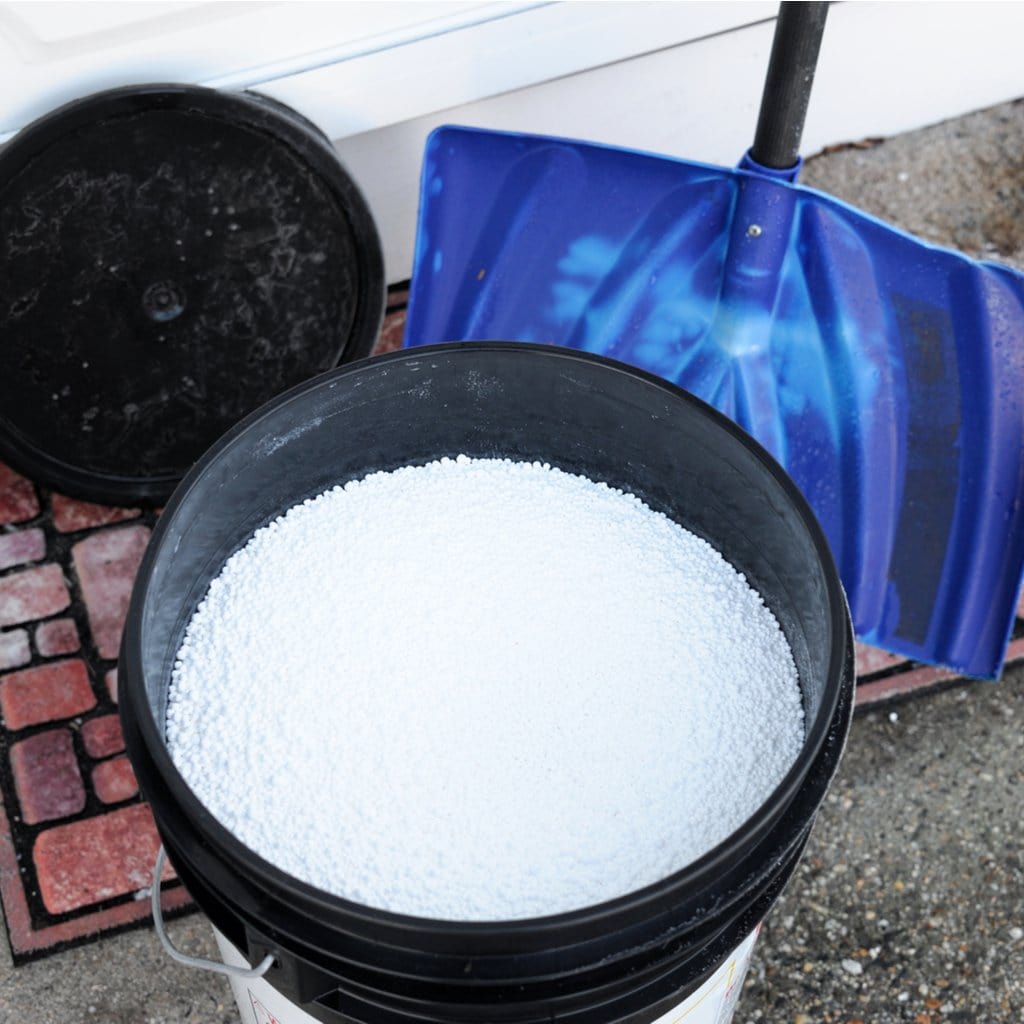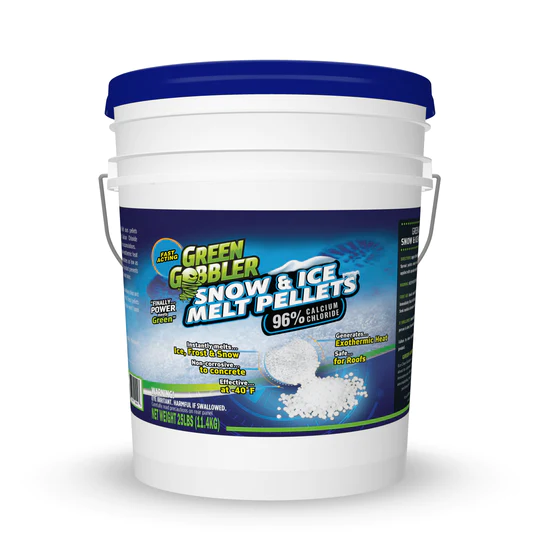It's easy to be overwhelmed looking for an ice-melt product.
As you look at the bags on store shelves and see “pure rock salt” and “pet-safe ice melt,” your head might spin from the sheer number of options that all look the same. You think back to eigth grade science class to try to remember the difference between sodium chloride and calcium chloride. Good luck.
Don't worry. We're here to help you understand all your options so you can make the right purchase for your needs.
Rock salt works great in normal winter conditions. Does it get lower than 5°F in your area? If not, then you’ll be fine choosing rock salt. Rock salt is strictly sodium chloride with possibly a few minerals mixed in for good measure. Rock salt lowers the freezing point of the water and breaks the chemical bonds between the snow and the pavement. Snow and ice will melt away for better traction. Just hope the temperature doesn’t drop any lower.




Ice melt is best when it’s bitterly cold outside. Did the temperature drop below 5°F overnight? You’ll need something stronger to break down the snow and ice on your property. Ice melt is either calcium chloride, magnesium chloride, sodium chloride or a mix of all three. Not only does ice melt lower the freezing point of water, but it also goes the extra step by generating heat. It goes to work instantly so you can get your day back on track in minutes.
Rock salt isn’t always the safest option. Sure, rock salt runs a little cheaper than ice melt, but don’t let the price be a dealbreaker. Consider the pros and cons before you stock up on sodium chloride.
Here’s the deal: Rock salt can be harmful to vegetation. So if you have a garden or a well-kept landscape, you might want to think twice before spreading rock salt around your property. Moreover, rock salt isn’t the best option if you have pets. If your beloved little pup decides to ingest some of the rock salt, it could cause gastrointestinal issues. Not to mention rock salt can get in-between the cracks of their paws and cause some irritation.
Ice melt… doesn’t really have a downside. Hmm, it goes to work immediately. It’s safer for pets than rock salt. It generates heat to melt ice and snow quickly. It works well with traditional spreader equipment. We can’t really think of too many downsides for ice melt. For the best results, follow these rules:
Don’t apply too much. Read the product label to figure out exactly what’s needed to melt the snow and ice on your property. After it’s done the job, scoop up any leftover salt to avoid any potential runoff.
Store ice melts away from children and pets. We suggest storing it up high in your garage or in another area of your home that you don’t visit often.
Wipe your paws (and their paws, too). Ice melt is generally safer for pets than rock salt, but it wouldn’t hurt to be careful around the pellets. Before you head back inside, wipe off your shoes and take a towel to your pet’s paws, just in case.





















